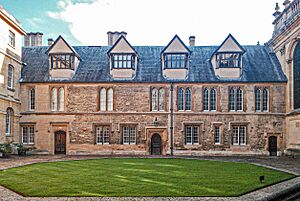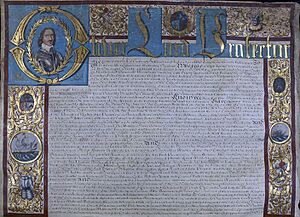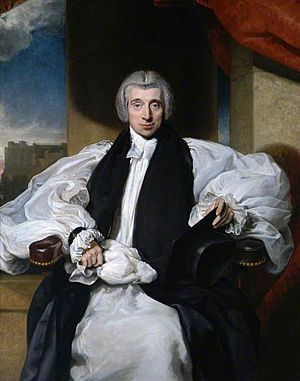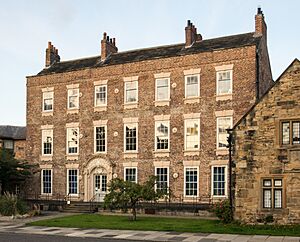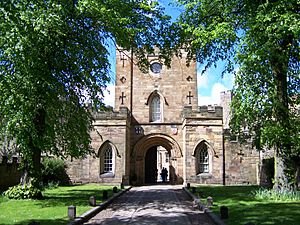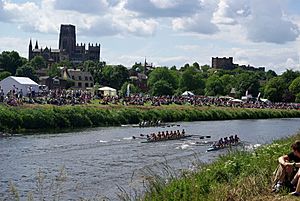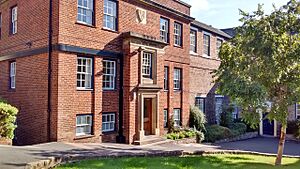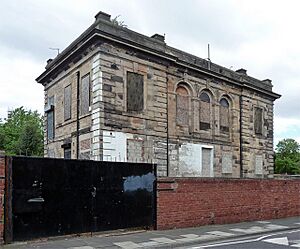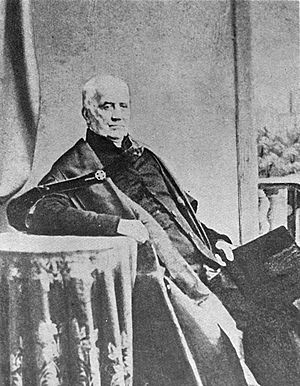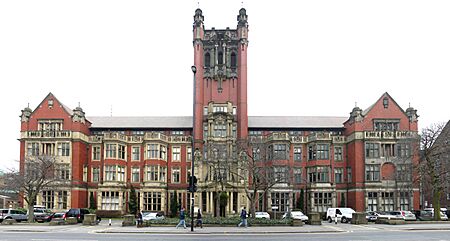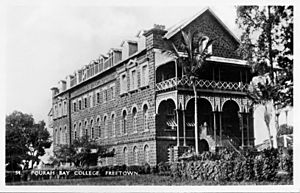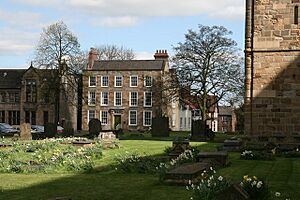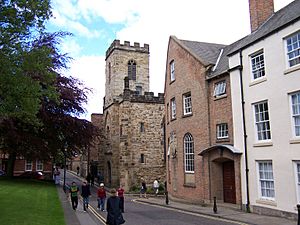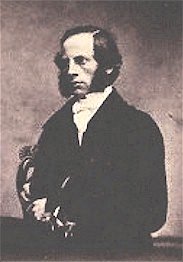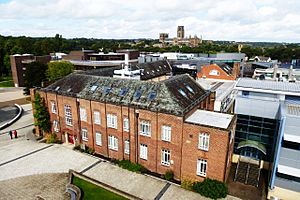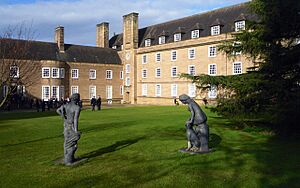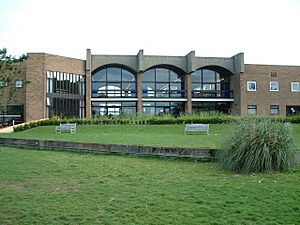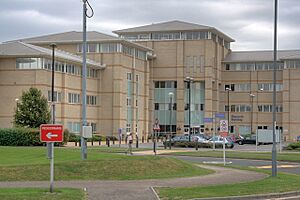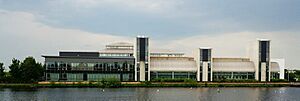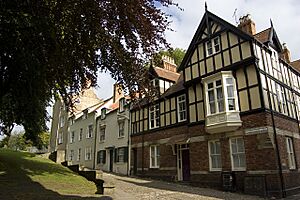History of Durham University facts for kids
The history of Durham University goes back over 190 years! It was officially started by a special law passed by the government. King William IV agreed to this law on July 4, 1832. He then gave the university a special document called a royal charter on June 1, 1837. This document made the university official and set up its rules. Durham University gave out its very first degrees on June 8, 1837.
The university says it's the third-oldest university in England. (Other universities like UCL and the University of London also claim this!) It's even listed as one of Europe's oldest universities that has been open continuously.
For a long time, from 1870, Durham University had parts in both Durham and Newcastle upon Tyne. They worked together in a special way from 1910 until 1963. Then, the Newcastle part became its own university, the University of Newcastle upon Tyne. Later, in 1992, Durham University opened a new campus in Stockton-upon-Tees. But in 2017, all the main teaching activities came back to Durham.
Durham University owns a huge area of land, about 563 acres! This includes a UNESCO World Heritage Site, which is a very important historical place. It also has an ancient monument called the Maiden Castle earthworks. Plus, there are many old, important buildings, including five grade-one listed buildings.
Contents
Early Attempts to Start a University
Medieval Beginnings and Old Ideas
People from Durham were involved in starting universities in England a long time ago. Before Durham University officially began, a place called 'Durham Hall' was set up in Oxford around 1286. This was for monks from Durham Abbey to study at the University of Oxford. Later, around 1380, it became Durham College, Oxford.
In 1541, Henry VIII wanted to use money from this old college to start a university in Durham. But his plans changed, and it became a grammar school instead. The land in Oxford was later sold to start Trinity College, Oxford.
Cromwell's University Idea
The next try to start a university in Durham happened under Oliver Cromwell in the 1600s. In 1649, many cathedrals in England were closed. This left Durham Castle and the cathedral empty. People asked Cromwell to start a university there.
In 1657, Cromwell agreed to create 'Durham College'. It had a leader, teachers, and schoolmasters. The college was given land and the cathedral library. However, it wasn't given the power to give out degrees like a full university.
In 1659, the universities of Oxford and Cambridge didn't want a third university. They especially didn't want Durham to give degrees. So, Cromwell's successor, Richard Cromwell, stopped the plan. When the king returned in 1660, Durham College closed.
How Durham University Began in the 1800s
In the early 1800s, many things came together to finally start Durham University. There was a growing need to train clergy (church leaders). New colleges were opening elsewhere, like University College London (UCL) in 1826.
People also worried that the government might take some of the Church of England's wealth. Durham Cathedral was one of the richest. There were also ideas to start a non-religious college in Newcastle.
In 1831, a man named Charles Thorp suggested starting a university in Durham again. The leaders of Durham Cathedral agreed. By the end of the year, it was advertised as the University of Durham.
In 1832, William van Mildert, the Bishop of Durham, introduced a bill in Parliament. This bill allowed the cathedral to use some of its money to support the university. It also made the Dean and Chapter of Durham the university's governors. The bill passed and became law on July 4, 1832. This is seen as the university's founding date.
First Years: 1832–1846
The University Opens Its Doors
From the start, Durham University was planned to have different colleges. The first college was University College. It was first located in a building called University House, which is now Cosin's Hall.
After the law was passed, a year was spent getting everything ready. The university library started in January 1833 with a gift of books from Bishop Van Mildert. The university officially opened on October 28, 1833. It had 19 "scholars" and 18 "students" studying for a Bachelor of Arts degree. There were also 5 students studying theology.
Durham was the first university in England to have entrance exams. The first student to pass was John Cundill. The university had three main professors who taught classics, mathematics, and theology. They were expected to teach much like professors in other European universities.
Sadly, one professor died just two days after the university opened. The first librarian also passed away soon after. Another professor, Hugh James Rose, left due to poor health. Temple Chevallier joined in 1834 and became a professor of mathematics and registrar.
In 1834, the university asked bishops if they would accept Durham graduates for ordination. Most said yes. The first theology degree was given out in 1834.
Getting the Royal Charter
In 1835, the university decided it would start giving out degrees. It also set up its main governing bodies, the Senate and Convocation. These bodies would help run the university and approve degrees.
On June 1, 1837, King William IV granted Durham University its royal charter. This important document officially recognized "The Warden, Masters and Scholars of the University of Durham." It confirmed Durham's status as a university.
The very first students graduated a week later, on June 8, 1837. The university also adopted its first seal. The first honorary degree was given to Earl Grey in 1838.
On July 19, 1837, Queen Victoria allowed the university to use Durham Castle. This castle had been a palace for the Bishop of Durham. University College moved into the castle, but parts of it needed a lot of repair.
In 1837, Durham also started the first engineering course at any English university. It was popular at first, but it was too expensive for students. Employers also didn't value the degree much, so the course closed a few years later.
The Durham University Observatory was built in 1839. It opened in 1842 and was used to study sunspots, planets, and comets.
University Life: Sports and Clubs
In 1834, the Durham Regatta started. It's the second oldest boat race event in the country. The university was one of the first groups to join.
The first debating society at Durham began in 1835. Later, in 1842, the Durham University Union debating society was created. This group eventually became the Durham Union Society.
The university also played its first recorded cricket match in 1842. The first home cricket match was played in 1843.
Growing and Changing: 1846–1909
New Colleges in Durham
In 1846, Bishop Hatfield's Hall (now Hatfield College) was founded. The idea was to offer cheaper places for students to live. Unlike the first college, Hatfield provided furnished rooms and communal meals. This system was later copied by other universities around the world.
Hatfield College grew quickly and built new buildings. In 1851, a third college, Bishop Cosin's Hall, opened in the old University House. These new colleges were owned by the university itself. This was different from Oxford and Cambridge, where colleges were independent.
The university's teaching was done by the university, not by individual colleges. The University Cricket Club started in 1846, representing the whole university. However, Hatfield College started its own boat club.
The Medical College in Newcastle
In 1851, the Newcastle upon Tyne School of Medicine and Surgery joined Durham University. It became the "Newcastle upon Tyne College of Medicine, in connection with the University of Durham." This meant students there could get Durham degrees.
In 1854, the university changed its rules. It removed religious tests for most degrees, except for arts and divinity. This allowed students of any religion to get medical degrees. Durham was included in the Medical Act of 1858, giving it the same status as Oxford, Cambridge, and London for medical degrees.
Challenges and Changes
By 1861, the number of students at Durham had dropped. A special group was set up by the government to investigate. One problem they found was that Charles Thorp, the first warden, ran the university like his own private place.
The group suggested changes, like giving the Senate more control and creating a science school. They also wanted to shorten the BA course and open arts degrees to non-Anglicans. The university leaders didn't agree to give up control. But after Thorp died in 1862, they started to make many of the suggested changes anyway.
In 1865, new rules removed religious tests for most qualifications. The time needed for a BA degree was also reduced to two years. Bishop Cosin's Hall closed in 1864 and merged with University College.
The College of Physical Sciences
In 1870, the Newcastle College of Medicine officially became part of Durham University. In 1871, the university and a mining engineering group started the College of Physical Sciences in Newcastle upon Tyne. This college offered science degrees like the BSc. It was the second university college of its kind in a provincial city.
From the very beginning in 1871, the science college welcomed women students. However, they couldn't get degrees at first. The first women actually started studying there in 1880.
In 1883, the College of Physical Sciences became a company called the Durham College of Science. It built new buildings and received government funding. In 1886, it started the first mining engineering program in England.
The college also expanded its courses to include humanities. In 1904, the Durham College of Science was renamed Armstrong College. This was in honor of Lord Armstrong, who had helped fund the college.
Growth in Durham and Beyond
Back in Durham, "unattached" students (who didn't live in a college) were allowed from 1870. These students later formed St Cuthbert's Society. Teacher training colleges for men (St Bede's College) and women (St Hild's College) also became part of the university.
Durham University also made connections with colleges overseas. These included Codrington College in Barbados and Fourah Bay College in Sierra Leone. Through Fourah Bay College, Durham awarded what was likely the first Bachelor of Arts degree in Africa in 1878.
In 1876, the university allowed theological colleges to become affiliated. This meant students from these colleges could get a Durham BA degree with less study time.
In 1882, the university celebrated its 50th anniversary. They awarded many honorary degrees and held special events. For many years, attending Sunday morning service at Durham Cathedral was required for students.
Women Students at Durham
Durham University voted to admit women in 1881, but it took time to make it happen. A legal opinion in 1886 said the university couldn't give degrees to women under its current charter.
However, women could study at the College of Science in Newcastle from 1871. In 1892, Ella Bryant passed the BSc exam. She tried to pay for her degree but was refused. The university then got a special charter in 1895 that allowed it to give degrees to women in all subjects except divinity. Ella Bryant received her BSc on June 24, 1895, becoming the first woman to get a degree from Durham.
The first women to study in Durham itself were from St Hild's College and "Home Students." The Hild students were the first to get degrees in Durham in 1898. In 1899, the Women's Hostel (now St Mary's College) was founded. Durham also became the first university in England to have a mixed medical school.
New Colleges Join Durham
At the start of the 1900s, Durham University had several colleges and halls. In 1904, an independent Anglican college, St Chad's Hall (now St Chad's College), was established in Durham. In 1909, another Anglican college, St John's Hall (now St John's College), also joined.
Changes to the University's Structure
The growth of the Newcastle colleges caused some stress. They had more students than the Durham colleges. In 1907, a new plan was suggested to make the Newcastle colleges more self-governing. After much discussion, a compromise was reached.
The Durham University Act was passed in 1908. New rules were approved in 1909, changing Durham into a "federal university." This meant it had different parts that worked together.
The Federal University: 1910–1963
A New Way of Working
After the new rules, George William Kitchin, the Dean of Durham, became the first chancellor of the university. The sub-warden became the first vice-chancellor. The university's property in Durham was given to the new Council of Durham Colleges.
New rules allowed students at Armstrong College in Newcastle to get a "Modern B.A." Women were also allowed to join Convocation (the assembly of university members) in 1913.
During the First World War, many students and staff served in the military. Some university buildings were used for other purposes. Student numbers dropped, and the university faced financial difficulties.
Growing After World War One
In 1919, Bishop Hatfield's Hall became Hatfield College. Other halls and hostels also became colleges. In 1920, the Women's Hostel became St Mary's College.
In 1920, Newcastle had 900 students, while Durham had only 200. The University Grants Committee told Durham it needed to grow to get more funding. This led to a new school of education and a science faculty opening in 1924. The Botanic Gardens also started in 1925. By 1935, student numbers in Durham had more than doubled.
During the 1920s and 30s, Durham Castle, where University College was located, was in danger of collapsing. Money was raised to fix it, and the castle was fully repaired by 1939.
The university's 100th birthday was in 1932, but celebrations were postponed until 1937 due to the Great Depression.
Changes to the University's Rules
In the 1930s, there were disagreements between the two Newcastle colleges. This led to a special government group being set up in 1935.
The group suggested changes to the university's rules. The two Newcastle colleges merged to form King's College. Both the Durham and Newcastle parts of the university got permanent leaders. The vice-chancellorship would alternate between them. The Senate became responsible for giving out degrees.
The new University Court started raising money to expand the Durham division. Plans were made for new buildings for St Mary's College, the student union, and science labs. However, these plans were cut short by the start of the Second World War.
During the war, student numbers in Durham fell. But in 1941, RAF cadets were sent to Durham to study science, which helped boost student numbers.
Expansion After World War Two
After the war, the Durham division grew quickly. The Warden, Sir James Duff, believed that building more student accommodation was key to growth. He wanted to double the number of students in Durham to over 1,000 within ten years.
In 1947, St Aidan's Society was founded for non-resident women students. The foundation stone for the new St. Mary's College building was laid by Princess Elizabeth (later Queen Elizabeth II). Plans for a new men's college, which would become Grey College, were also approved. By 1948, the Durham division had 1100 students.
The new St Mary's College opened in 1952. In the same year, approval was given for Grey College, which opened in 1959.
Other parts of the university also expanded. New academic buildings opened. In 1958, a new central system for student admissions began. St Aidan's Society became St Aidan's College in 1961 and moved into new buildings in 1964. Work on Dunelm House (a student center) and Kingsgate Bridge started in 1962.
In 1960, the university aimed to have 3,000 students by the early 1970s. They planned for more new colleges.
Separation of Newcastle and Durham
In 1947, there were discussions about the Durham-Newcastle split again. Lord Percy, the head of King's College in Newcastle, suggested changing the university's name to 'University of Durham and Newcastle'. This idea was rejected.
By the late 1950s, Durham had over 1,500 students and Newcastle had 3,500. In 1960, the academic leaders in Newcastle decided they wanted to become an independent university. The Durham division agreed.
The government and the University Grants Committee approved the plan in 1960. The Universities of Durham and Newcastle upon Tyne Act was passed in 1963. On August 1, 1963, King's College became the University of Newcastle upon Tyne. Durham University was once again based only in Durham City.
Modern University: 1963–1999
After the split, the university's new rules kept the title of Warden of the Durham Colleges. The main leader of the university became the vice-chancellor and warden.
Expansion continued in Durham. New buildings for Grey College opened in 1963. In 1964, the central admissions system for students began. Van Mildert College, the School of Engineering, and the Durham Business School all opened in 1965. The botanic garden moved to its current site in 1970.
Sierra Leone became independent in 1961. In 1967, Fourah Bay College joined the new University of Sierra Leone and ended its connection with Durham.
In 1963, Neville's Cross College started admitting both men and women. In 1966, Cranmer Hall in St John's College became the first Anglican theological college to train women for ordination. Ushaw College, a Catholic seminary, became a licensed hall of residence in 1968.
In 1965, the sports hall at Maiden Castle opened. In 1966, Dunelm House, a central student facility, was completed. In 1969, the head of the Student Representative Council was given a seat on the University Council. In 1970, the Student Representative Council became Durham Student Union.
In the 1970s, government changes to teacher training threatened the teacher training colleges. In 1975, St Hild's College and the College of the Venerable Bede merged to form the College of St Hild and St Bede. This college later became a full part of the university in 1979. Neville's Cross College merged with another college in 1977 and left the university.
In 1971, Van Mildert became the first university-owned college to admit both men and women. This was followed by Collingwood College opening in 1972 as the first purpose-built mixed college. St John's College also became fully mixed in 1973.
St Aidan's College decided to become mixed in 1978, with men joining in 1981. Grey College also voted to go mixed in 1983. By 1988, all the men's colleges had become mixed. Trevelyan College, a women's college, voted to go mixed in 1987, and men were admitted in 1990.
In 1986, Durham Castle and Cathedral were named a UNESCO World Heritage Site. This was expanded in 2008 to include Palace Green.
The university grew significantly in the late 1980s and 1990s. Student numbers almost doubled in under ten years.
In 1988, the Wesley Study Centre opened within St John's College. It trained Methodist ministers alongside Anglican ministers.
In 1990, the Teikyo University of Japan in Durham, a Japanese university campus, opened in Durham.
In 1994, Durham was one of the founding members of the 1994 Group, which was a group of smaller research-focused universities.
Developing in Stockton
In 1987, the idea of Durham University having a campus in Teesside was discussed. Teesside was a large area without a university. In 1989, Durham University and Teesside Polytechnic announced they were working together to create a new higher education center.
After some discussions, it was decided to create a Joint University College between Durham and Teesside. This college, initially called University College, Stockton, opened on October 12, 1992, with 190 students.
In 1993, Queen Elizabeth II officially opened the college. By 1994, Durham took over the main responsibility for the college. In 1996, it was agreed that students at Stockton would receive degrees only from Durham University. In 1998, the campus was renamed the University of Durham, Stockton Campus (UDSC).
The 21st Century
In 2000, new accommodation and offices for the Graduate Society opened. The Graduate Society became Ustinov College in 2003.
By 2000, the Stockton campus had grown to 1,350 students. It was decided to split the campus into two colleges, similar to those in Durham City. These two new colleges, John Snow and Stephenson, were formally established in September 2001.
Also in 2001, a new medical school opened at the Stockton campus. This was the first time Durham had medical students since 1963. In 2002, Queen Elizabeth II granted the Stockton campus the title of "Queen's Campus."
In 2002, degree ceremonies moved to Durham Cathedral. By 2003, the university had over 11,000 undergraduate students, with 17% at the Queen's Campus.
In 2003, the last single-sex college, St. Mary's, voted to admit men. The first undergraduate men joined in 2005. In 2004, the university started building a new college next to Ustinov. This college, Josephine Butler College, opened in 2006. It was the first completely new college in Durham City since the 1970s.
In 2004, Durham was nominated for the Sunday Times University of the Year award. It won the award in 2005.
In 2005, the university introduced a new logo and started using "Durham University" as its trading name. The official name remains the University of Durham.
In 2007, the university announced plans to expand the Queen's Campus in Stockton. The Infinity Bridge was opened in 2009, connecting the Queen's Campus to new developments. However, in 2015, the university announced it would be reviewing the future of the Queen's Campus.
In Durham City, new buildings like the Calman Learning Centre and the Palatine Centre were opened. The university also spent a lot of money renovating the Palace Green Library.
In 2008, Durham created the Sharjah Chair in Islamic Law and Finance with funding from Sheikh Sultan bin Muhammad Al-Qasimi. In 2008, Durham also launched the Centre for Catholic Studies. In 2011, Ushaw College closed as a Catholic seminary, but parts of it are now used by Durham University.
In 2009, Tony Blair, the former British Prime Minister, announced a partnership with Durham University to create a global network for his Faith and Globalization Initiative.
Between 2010 and 2012, Durham received some donations that caused controversy. In 2012, Durham joined the Russell Group, a group of leading research universities, and left the 1994 Group.
In 2012, the university planned to increase student numbers significantly. They also approved plans for a new 500-room college at Mount Oswald.
Also in 2012, the Church of England chose Durham as its partner university for ministerial training. The Methodist Connexion decided to centralize its training, meaning fewer Methodist trainees at Durham.
In 2013, the Michael Ramsey Chair in Anglican Studies was established in partnership with Durham Cathedral. In 2014, Durham created the UNESCO Chair in Archaeological Ethics and Practice.
In 2014, Durham won the Times and Sunday Times Sports University of the Year award.
In November 2015, the university announced it would be reviewing the future of the Queen's Campus. In February 2016, it was recommended that the colleges and academic activities at the Queen's Campus move to Durham City from September 2017. This was confirmed in May 2016. The School of Medicine, Pharmacy and Health was transferred to Newcastle University. The Queen's Campus will become an International Study Centre.
In 2020, the university opened its 17th college, South College. In 2023, the university announced that the old county hospital would eventually become Durham's 18th college.
See also
- List of vice-chancellors and wardens of the Durham University
- List of chancellors of Durham University


